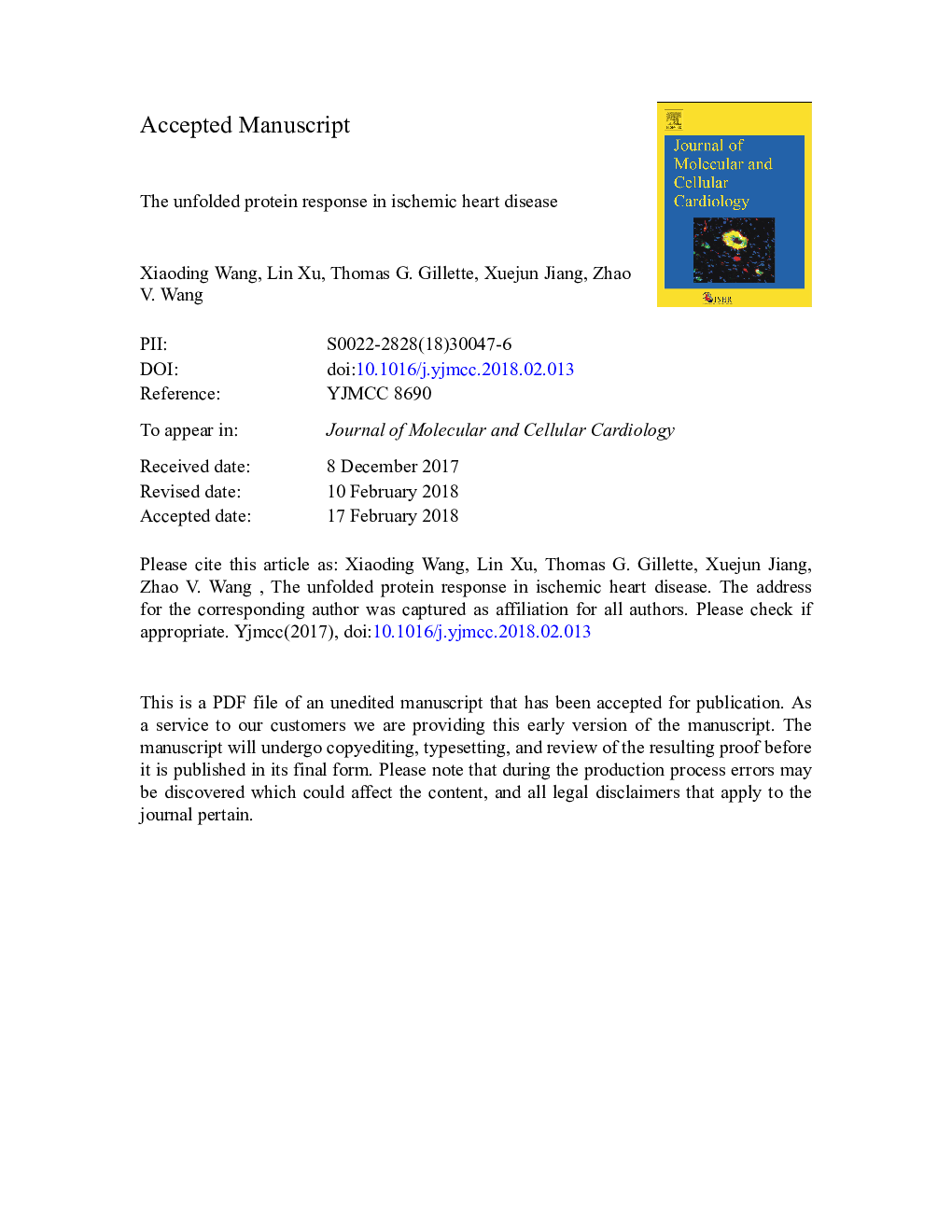| Article ID | Journal | Published Year | Pages | File Type |
|---|---|---|---|---|
| 8473457 | Journal of Molecular and Cellular Cardiology | 2018 | 39 Pages |
Abstract
Ischemic heart disease is a severe stress condition that causes extensive pathological alterations and triggers cardiac cell death. Accumulating evidence suggests that the unfolded protein response (UPR) is strongly induced by myocardial ischemia. The UPR is an evolutionarily conserved cellular response to cope with protein-folding stress, from yeast to mammals. Endoplasmic reticulum (ER) transmembrane sensors detect the accumulation of unfolded proteins and stimulate a signaling network to accommodate unfolded and misfolded proteins. Distinct mechanisms participate in the activation of three major signal pathways, viz. protein kinase RNA-like ER kinase, inositol-requiring protein 1, and activating transcription factor 6, to transiently suppress protein translation, enhance protein folding capacity of the ER, and augment ER-associated degradation to refold denatured proteins and restore cellular homeostasis. However, if the stress is severe and persistent, the UPR elicits inflammatory and apoptotic pathways to eliminate terminally affected cells. The ER is therefore recognized as a vitally important organelle that determines cell survival or death. Recent studies indicate the UPR plays critical roles in the pathophysiology of ischemic heart disease. The three signaling branches may elicit distinct but overlapping effects in cardiac response to ischemia. Here, we outline the findings and discuss the mechanisms of action and therapeutic potentials of the UPR in the treatment of ischemic heart disease.
Related Topics
Life Sciences
Biochemistry, Genetics and Molecular Biology
Cell Biology
Authors
Xiaoding Wang, Lin Xu, Thomas G. Gillette, Xuejun Jiang, Zhao V. Wang,
